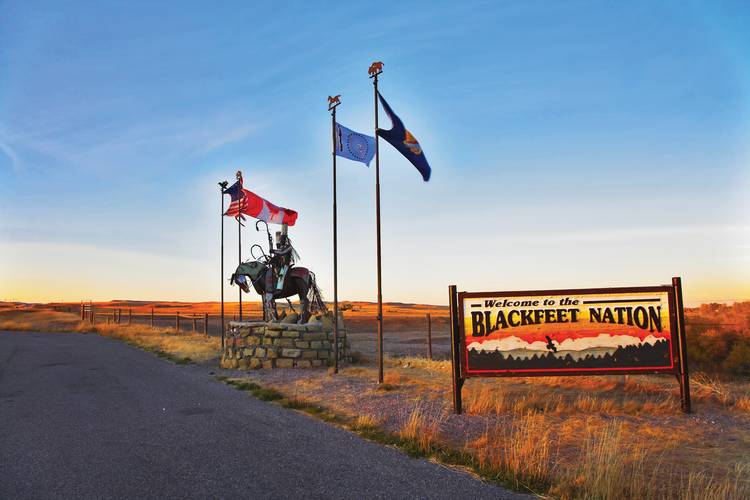Ekaterina Zoubak, Substance Abuse and Mental Health Services Administration, Rockville, Maryland

Abstract
What key ingredients are needed to effectively promote the mental health and resilience of young children in American Indian and Alaska Native communities? What should non-indigenous allies know when working with Indigenous communities and partners to support young child wellness? What elements and contexts should be taken into consideration when designing and funding such efforts? The following article examines these questions and shares insights and perspectives from those who are working toward better outcomes for young children and families in American Indian and Alaska Native communities.
…before we can presume to know how to help Native communities in culturally appropriate ways, we must first study the cultural underpinnings of wellness from the perspective of contemporary community members (Gone, 2004, p. 14).
A multitude of private and public funding streams such as philanthropy, public dollars, and federal investments exist with an aim to promote optimal young child development. Some of these efforts strive to support tribal systems and effect positive change for American Indian and Alaska Native children. However, these undertakings only partially meet the needs of the vast and diverse Indigenous communities throughout the United States, territories, and jurisdictions. There are also many remarkable Native-led efforts, ranging from Indigenous midwifery, to language revitalization and traditional wellness projects, to Indigenous rights and equity initiatives that are working to address the aftermath of traumatic colonization and assimilation policies, and to foster healthy and thriving communities. In a perfect world, more substantial and sustainable funding streams would exist to support this work in combination with reimbursable services. In the fields of mental health and health policy and innovation, where westernized knowledge, methodology, and interventions dominate, it is necessary to create space for the voices and experiences of racial and ethnic groups whose perspectives are often included as an afterthought. Sharing the decision-making table equitably with communities, scholars, and advocates of color will yield initiatives that are effective, sustainable, and visionary in the long term.
The purpose of this article is to share (a) direct input from three individuals who are supporting infant and early childhood mental health (IECMH) and fostering change for children and families, and (b) recommendations for funders and change agents, both private and public, and those who are working to conceptualize and design efforts for young children in U.S.-based American Indian and Alaska Native communities. The views presented in this article are specific to the individuals interviewed, and do not represent the breadth and diversity of perspective, experience, and cultural variation that permeate Native communities. Yet these recommendations re-affirm the importance of genuinely listening to the experiences, wisdom, and expertise that come from the communities at the receiving end of decisions, policies, and programs.
Several interviews mention Project LAUNCH (Linking Actions for Unmet Needs in Children’s Health), a federal grant program administered by the Substance Abuse and Mental Health Services Administration (SAMHSA), U.S. Department of Health and Human Services. Project LAUNCH aims to foster the healthy development of young children birth through 8 years old, preparing them to thrive in school and beyond. LAUNCH grants are designed to build the capacities of adult caregivers to promote healthy social and emotional development; to prevent mental, emotional, and behavioral disorders; and to identify and address behavioral concerns before they develop into serious emotional disturbances (SAMHSA, 2019). One cohort of the grant program, Indigenous Project LAUNCH, is exclusively made up of grantees who predominantly serve Indigenous populations (tribes within the U.S., tribal organizations, Alaska Native organizations, and U.S. territories). Project LAUNCH is also the unifying context of my professional relationships with the interviewees.
Early childhood programs touch the core of communities. After all, when these programs focus on children, they are aiming to change the trajectories of future generations. When working with multicultural and diverse populations, including Indigenous communities, it is important to explore and understand values related to children, family, and parenting. Making assumptions about family structures, or caregiver and gender roles, may create a disconnect with the community. Hence, all of the interviews collected for this article begin by exploring the community’s values about children, families, and wellness, which is a grounding upon which any and all efforts should rest.
All interviewees responded to the following questions, prompting them to talk about tribal systems throughout the United States, as well as cultural practices and early childhood efforts in their respective Native communities:
- What are your community’s values about children? Family? Child wellness?
- What are some compelling examples you have seen in Native communities to promote the emotional well-being of infants and toddlers? How can systems and programs best support resilient communities?
- For non-Indigenous organizations, allies, or funders, what should we know about Indigenous communities and the way tribal systems operate in order to be more helpful, rather than unhelpful?
- What are some insights you can share related to long-term system change and shifting tribal systems?
Early Childhood Investments: Thinking 150 Years Ahead
Dawn A. Yazzie works as an early childhood mental health consultant for Smart Support at Southwest Human Development in Arizona. The program is funded by the Arizona First Things First statewide initiative. Dawn also works with SAMHSA’s national Center of Excellence for Infant and Early Childhood Mental Health Consultation through Southwest Human Development and the Children’s Equity Project. Dawn has experience in providing national technical assistance and in providing IECMH consultation to early care directors, teachers, and home visitors in Navajo Nation. Dawn has been able to incorporate traditional Navajo cultural perspectives into the early childhood best practices trainings when working in Navajo Nation.
Navajo values are focused on balance, purpose, and connectedness. The outcome of more than 500 years of laws and policies to assimilate and exterminate Indians created a shift from traditional Navajo philosophies and way of life to the loss of traditional protective factors. Despite this oppression, there is great resilience within the Indigenous communities that help them survive and for many, thrive, in this modern world. Currently, many elected leaders lack the knowledge about the importance of early childhood education and care, and this contributes to the lack of financial and system-wide support within tribal systems. Today’s tribal systems can include tribal courts, child welfare services, health care, education, natural resources, and economic development which rarely collaborate to work to support young children and their families. Before colonialism, Indigenous people had community-wide systems in place that included balance, prayer, and ceremonies to keep in harmony with the universe and nature. This truly community-wide system and way of life that was practiced for thousands of years can be incorporated more intentionally when tribes apply for and use grants through thoughtful, coordinated planning and coordinated grant applications and services for and with young children and their families at the forefront of every programs’ design. The lack of financial support or focus on quality and long-term early childhood programs have been a real barrier to promoting the emotional wellness of young children. What is needed are leaders who think of our children and grandchildren in the longer term and who know that the land and family are connected.
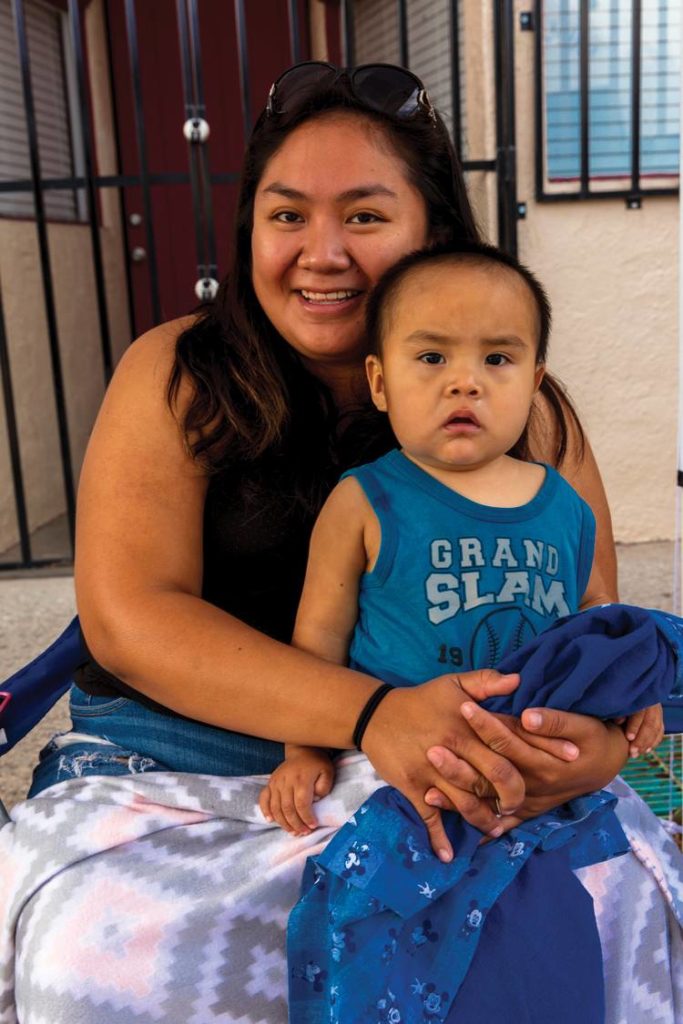
When working with multicultural and diverse populations, including Indigenous communities, it is important to explore and understand values related to children, family, and parenting. Photo: Joseph Sohm/shutterstock
For efforts that support early childhood wellness and development to work in Indigenous communities, we need examples of what models such as IECMH consultation look like within tribal communities. For example, the consultation model that was implemented by the Confederated Salish and Kootenai Tribes used a multigenerational consultant who understood the culture. The importance of self-reflection and exploration of one’s bias and privilege cannot be emphasized enough and has been echoed as a necessary and valuable process by scholars, community members, community leaders, and practitioners alike. To address cultural differences and gain trust when working in Native communities as an outsider, it is helpful to know one’s history and how it impacts the present. It is equally important to realize bias and privilege, and approach this work with cultural humility. At the same time, it remains important for anyone working with Native communities to be in proximity, to understand the historical context, and to understand the constraint of limited resources in the communities. Some of these limitations, along with historical trauma, have made it challenging for communities to be resilient and have hope.
To nourish resilience in Navajo communities traditionally, medicine men and women do mental health work through ceremony, prayer, and teachings. All of the powers of the natural world are used, and that is how we support resilience and find strength in times of transition. In its most basic form, IECMH consultation can look like traditional Navajo teachings and tradition. For example, traditional Navajo practitioners talk about the importance of taking care of self; thinking about one’s actions, thoughts, and words; and choosing them carefully. Reflective practice is incorporated in traditional Navajo teachings and is the foundation for successfully supporting families. Interventions like this are a way to recapture these traditional ways of being and having connection and relationships.
To nourish resilience in Navajo communities traditionally, medicine men and women do mental health work through ceremony, prayer, and teachings. All of the powers of the natural world are used, and that is how we support resilience and find strength in times of transition. In its most basic form, IECMH consultation can look like traditional Navajo teachings and tradition. For example, traditional Navajo practitioners talk about the importance of taking care of self; thinking about one’s actions, thoughts, and words; and choosing them carefully. Reflective practice is incorporated in traditional Navajo teachings and is the foundation for successfully supporting families. Interventions like this are a way to recapture these traditional ways of being and having connection and relationships.
Whereas many in the Western world have this belief that research and evidence-based practices are better, sometimes the best things are not measurable. Often, the funding is driven and characterized by the latest research and effective practices. Meanwhile, the gap between the research and the realities often sets up communities in unhelpful patterns. For instance, the grant writers who create the applications for funding and the local workforce may not have the same lens of what is considered “best practice” in the academic world. For Native communities, especially, there needs to be an equitable way of blending research and traditional knowledge. In particular, in order to effect long-term systems change within underserved Native communities, there needs to be a focus on supporting the workforce and growing community-based leadership and on really investing in the local professionals who will ultimately be the best helpers and supports for the community’s families.
Being intentional is the foundation of Navajo tradition; everything is done with intentionality, and this needs to be reflected in how grants and efforts are carried out. With forethought and strategic planning toward 100-150 years ahead and future generations in mind.
Relationships, the Basis for Wellness
Juli Skinner (Ponca Tribe of Oklahoma) is a licensed master social worker with the state of Oklahoma and has been employed with the Cherokee Nation since 2000. Currently, she is the senior director of Behavioral Health and supervises several programs that address behavioral health in tribal communities across the 14-county jurisdiction of Cherokee Nation. Juli has extensive experience with Indian Child Welfare and behavioral health. Juli also serves as an adjunct professor at the University of Oklahoma in the master’s of social work program.
Many stereotypes permeate mainstream culture related to what being Native American looks like. People assume that everyone lives on reservations or in teepees and wears headdresses. In reality, each tribe is distinct. For example, there are no reservations in Oklahoma such as the ones that exist in other states. Every tribe has their own way of practicing religion and ceremony. Also, there are patriarchal and matriarchal societies. The Ponca Tribe is patrilineal, and each decision is made as a group. Cherokee Nation, on the other hand, is matrilineal. In Cherokee Nation, women are leaders of their family systems. In many communities, nuclear family is not a common concept, and all these factors influence how services are structured.
Similarly, there is a diversity of American Indian and Alaska Native tribal governments, systemic structures, and cultural beliefs. A cookie-cutter approach or an assumption that all tribal systems operate in the same way would derail the intent and hinder any positive results of an initiative or program. In some cases, funding is used to create a system, and grant funds can serve as necessary seed money to help move toward billing or build capacity. When awarding funds or starting new efforts, there has to be a good way to understand the real capacity of the tribe and the type of involvement or ownership that tribal organizations will have of the activities included in a funding proposal. After genuinely learning about the community, an understanding of tribal systems needs to be developed in order for efforts to be successful. Effective partnership requires listening to the community and avoiding assumptions, while exploring the capacity differences between the tribes and the funding structures that may be available.
Trauma also continues to impact the Cherokee Nation, as it does many other Native communities. Even current generations have grown up with stories of boarding schools and needing to hide ceremony. Many families have limited healthy coping skills, and children are growing up detached from culture. The cycle of trauma and substance abuse is impossible to break sometimes. It is imperative to understand how the intergenerational aspects of trauma, coupled with the everyday exposure to traumatic events, manifest themselves in the community and younger generations.
Across several transformative children’s mental health projects within Cherokee Nation that led to sustainable results, several key elements made a difference and created long-term change. Combining interventions that started with family engagement and input with services that were not punitive led to parents feeling comfortable with seeking therapeutic services. Community-wide healing and connection to culture also created an important protective factor. For Cherokee Nation, leveraging transformational leadership, developing genuine relationships with parents, and organizing across the community were foundational for the successful implementation of IECMH and wellness efforts.
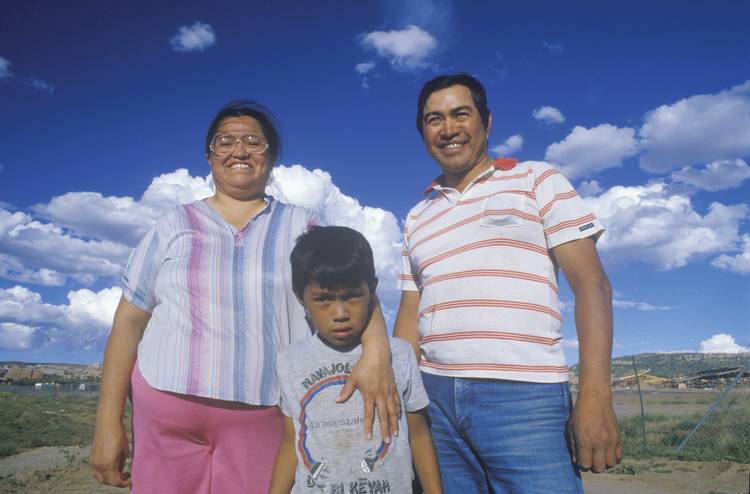
Navajo values are focused on balance, purpose and connectedness. Photo: Joseph Sohm/shutterstock
Resiliency and Healing: Ask the Community What It Needs
Shannon CrossBear articulates her purpose as: To demonstrate and promote gentle healing. She expresses her commitment to healing through her work in the world. That work has included facilitating and consulting with the National Indian Child Welfare Association, the Federation of Families, Georgetown University, and The National Child Traumatic Stress Network, and participating in the Surgeon General’s Conference on Children’s Mental Health. Shannon has worked with tribal and non-tribal communities in creating systems of care using traditional intervention and promotion of culturally congruent and trauma-informed practices. She is currently acting as a change agent with Change Matrix and providing support to states, tribes, and territories serving early childhood, youth, and young adult populations. Shannon is an enrolled member of Fort William First Nation, Lake Superior Band of Ojibwe.
When funds are provided to Indigenous communities, it is important to find the balance between accountability and prescriptiveness and take into consideration Indigenous Knowledge and the stages of change in the community. When a funder, ally, or organization comes to the community to do work or to provide technical assistance, it is important to be in the place of cultural humility—to be open to learning, to accept that one does not know everything, and to understand that the worldview one holds is different than those of Native communities. It is important to engage in the process of creating cooperative, reciprocal, and collective work between allies and Indigenous communities, and the responsibility of the outside funders and partners is to educate themselves about contextual factors such as economical and historical contexts that influence the health and well-being of children and families. One needs to educate themselves about issues relevant to the community; know the environmental issues, the safety and food access issues, and Indian Child Welfare Act-related issues. Meeting families where they are is not a novel concept, but is an especially relevant one when working at the intersections of several worldviews or cultures and with families who have limited access to support and resources.
Oftentimes, a deficit-focused approach permeates the delivery of services, choice of assessments or interventions, and the relationship that funders may have with the tribal entities and communities where projects are implemented. Communities are resilient. One important lesson is to be respectful of their knowledge and of the protective factors. There is a deep well of opportunity for resilience in the community. Sometimes the things that really promote mental health are not in a program. They are practices, ceremony, and are deeply embedded within a community. There is a need to create shields of resiliency that protect against the arrows of risk, and these are often made up of language, culture, and being connected in a good way. One example is the Welcoming in the Womb ceremony, which exemplifies the idea of a village coming around a pregnant woman to support her. During the ceremony, close and extended relatives who encourage the baby to arrive and who make commitments to support the mother and her health surround the woman. The woman is also assisted post-birth by the community of helpers who nourish the mother–child relationship. These supports are not formal or part of the tribal health systems. It is important to think about what has been defined as acceptable or an evidence-based practice and whether it is based on a Western construct. There needs to be a bridge of translation between a practice or an evidence-based practice and how it relates to people. When we look at certain home visiting models, in some communities there are other ways to implement this work. How can we encourage system support for the things that work but are not manualized? Sometimes funders and systems have these boxes into which the things that really help don’t fit. We need to stretch these boxes.
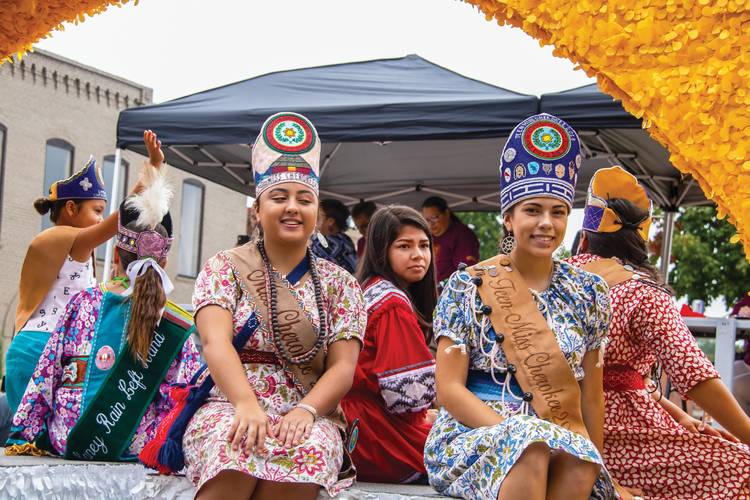
In Cherokee Nation, women are leaders of their family systems. Photo: Svineyard/shutterstock
The concept of equitable reciprocity—in which the non-Native academics, researchers, philanthropists, or federal staff not only bring best practices and research-based interventions to a community, but also pause to learn from the community—should drive partnerships and collaboration with Native organizations and communities. The necessity of starting with an ask, versus a tell, cannot be overstated enough when we strive to change systems and effect long-term change.
Common Themes
The following common themes have emerged from the conversations described in this article. These are important considerations that should be heeded whenever organizations or agencies decide to conceptualize, implement, or scale up any efforts that interact with Indigenous children and families.
Theme 1: Cultural Humility and Reciprocity
All of the individuals who shared their knowledge during this process began so by describing the necessity for cultural humility. Cultural humility can be defined as “a lifelong process of self-reflection and self-critique whereby the individual not only learns about another’s culture, but starts with an examination of her/his own beliefs and cultural identities” (Yeager & Bauer-Wu, 2013). It is also a process that intends to fix power imbalances and address implicit biases. Historically, Indigenous Knowledge and “ways of knowing” have been ignored, or relegated to the margins of “otherness” and subjectivity. A culturally humble stance, grounded in reciprocity and exchange of knowledge (i.e., striving to learn from Indigenous Knowledge as opposed to imposing Eurocentric paradigms), should set the foundation for collaborative efforts or projects designed for Indigenous and multicultural communities.
Theme 2: Importance of Trust Building and Relationships
Browne et al. (2016) defined four approaches when operationalizing elements of equity-centered care, one being the development of partnerships with Indigenous peoples. In the Roadmap for Collaborative and Effective Evaluation in Tribal Communities (Tribal Evaluation Workgroup, 2013), the authors urged researchers and practitioners to take the time needed to build community engagement and relationships, while maintaining respect for tribal sovereignty and “Indigenous Ways of Knowing.” It is important to visit the communities we strive to serve and to meet with caregivers of young children, tribal leaders (when appropriate), local community activists, and those who have been doing this work long before a given project or funding stream was made available. It is equally important to engage in learning about the systemic context and culture of a tribal community or Alaska Native village as part of the relationship-building process.
Theme 3: Aligning Evidence-Based Practices With Cultural Values
Few early childhood interventions have been specifically developed for Indigenous children. Cultural adaptations and enhancements of parenting interventions like Parent-Child Interaction Therapy (Bigfoot & Funderburk, 2011), or home visiting models (Stark, n.d.) are promising and offer a much-needed choice of services that are appropriate for Native families. Similarly, the interviews spoke to the need for continuing the alignment of interventions with cultural traditions, worldviews, and traditional wellness practices. This alignment also involves making sure that there is a “goodness of fit” between a framework or intervention and the specific context of the community or cultural group. This process rests on pillars of community engagement, learning through the lens of cultural humility and relationships, and the principle of reciprocal learning that values traditional knowledge and the protective factors (e.g., social connectedness, family ties, ceremony, language, cultural practices, storytelling) that can be found in all communities.
Theme 4: Prevalence of Trauma
All interviewees also emphasized the depth and impact of historical and community trauma. Indeed, American Indian and Alaska Native children experience trauma at higher rates than other groups (Around Him & Demand, 2018; Lechner, Cavanaugh, & Blyler, 2016; Sarche & Spicer, 2009). It is important to ensure that efforts and services are trauma-informed. At the same time, practitioners and policymakers should also remain mindful of the process of “pathologizing” individuals, which may occur as part of the trauma discourse (Browne et al., 2016). What is done together to address the impact of historical and ongoing traumatization of young children should be nested within the context of equity, decolonization, and community-centered healing practices that will help tap into the resilience of Native communities.
Theme 5: Need for Local Capacity Building and Community Support
A final theme is the capacity building of the workforce in American Indian and Alaska Native communities. This means that initiatives or funding aimed at strengthening systems of care for young children should offer opportunities for professionals and rising leaders to have access to resources, information, trainings, and leadership building to be able to serve the families in their own communities. Funders would perpetuate a dynamic of dependence on outside and temporary professionals and do a disservice by not embedding capacity strengthening into funding opportunities or by not creating funding streams to do so.
Conclusion
It is evident, from these accounts and data available elsewhere (Around Him & Demand, 2018; Gone, 2004; Probst & Fozia, 2019; Sarche & Spicer, 2008), that historical trauma and longstanding systemic inequities have ripple effects deep within Native communities. American Indian and Alaska Native children experience poverty at a higher rate compared to the national average (Around Him & Demand, 2018) and in 2017, the rate of American Indian and Alaska Native children under 5 years old living in poverty was the highest amongst all racial and ethnic groups (Children’s Defense Fund, 2018). Until a more structured, strategic, and collaborative effort is made to address structural inequities and disparities, positive early childhood mental health and family well-being outcomes will remain limited (Hinton, Lucas, & Zoubak, this issue, p. 57; Jordan & Harper, 2020; Sarche & Spicer, 2008).
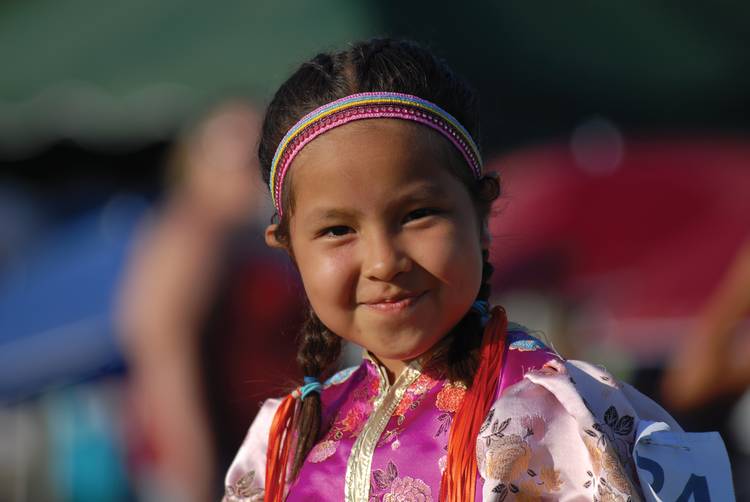
Few early childhood interventions have been specifically developed for Indigenous children. Photo: Sergei Bachlakov/shutterstock
The voices shared through this article belong to leaders who have advanced equity and IECMH efforts in their respective communities and beyond. They underscore the necessity of confronting past and current injustices and inspire different ways of partnering to support American Indian and Alaska Native young children and families. Self-reflection is necessary for effective leadership (Heifetz, Grashow, & Linsky, 2009) and for meaningful change-making that does not cause harm. At the same time, stepping back to understand environmental and to contextual factors that impact mental health is crucial when striving to partner with Indigenous communities. In order be equitable and demonstrate respect for the strengths held within the communities themselves, those who lead this work should aim to do so through genuine partnerships and exchange of knowledge. One aspect of this fellowship has been an internal examination of each Fellow’s personal approach to professional endeavors and goals. This process is illustrated in many case examples throughout this special issue by Fellows of the current cohort. Through my direct work with grantee teams from American Indian and Alaska Native communities and as part of the reflective process embedded within the ZERO TO THREE fellowship, I nourished my own inner adaptive leader, setting aside time and mental resources to deeply reflect on my current role in promoting the well-being of all young children and families. Frontline providers, program administrators, advocates, and funders must equally reflect on their roles as leaders and create space for engaging in self-awareness and growth that promote positive change.
Acknowledgments
I would like to express my gratitude to the individuals who have agreed to be interviewed for this writing project. Thank you for sharing your knowledge and allowing me to learn.
Disclaimer
This article was authored by Ekaterina Zoubak in her personal capacity. The opinions expressed in this article are the author’s own and do not reflect the official views of the Substance Abuse and Mental Health Services Administration, the Department of Health and Human Services, or the United States government.
Author Bio
Ekaterina Zoubak, MA, is a public health advisor at the Center for Mental Health Services, Substance Abuse and Mental Health Services Administration (SAMHSA), U.S. Department of Health and Human Services. Ms. Zoubak currently serves as a federal project officer for Project LAUNCH (Linking Action for Unmet Needs in Children’s Health), the Infant and Early Childhood Mental Health and Mental Health Awareness Training grant programs. In this capacity, she works closely with states, territories, tribal organizations and governments, and a variety of other organizations and entities to advance infant and early childhood mental health and maternal mental health efforts. She is the lead for projects related to American Indian and Alaska Native communities within the Project LAUNCH program and the coordinator for Indigenous Project LAUNCH. Ms. Zoubak has been involved in various cross-agency federal initiatives and efforts focused on early childhood and children’s mental health. Prior to joining SAMHSA, she provided group and individual mental health services to children and adolescents within schools and psychiatric settings Ms. Zoubak and holds a bachelor’s degree in psychology and a master’s degree in clinical psychology. She is a member of the 2018–2020 ZERO TO THREE Fellowship Class.
Suggested Citation
Zoubak, E. (2020). Infant and early childhood mental health in American Indian and Alaska Native communities: Considerations for early childhood partners and funders. ZERO TO THREE Journal, 40(5), 66–72.
References
Around Him, D., & Demand. (2018). American Indians and Alaska Natives must be included in research on adverse childhood experiences. Retrieved from source
Bigfoot, D. S., & Funderburk, B. W. (2011). Honoring children, making relatives: The cultural translation of parent-child interaction therapy for American Indian and Alaska Native families. Journal of Psychoactive Drugs, 43, 309–318.
Browne, A. J., Varcoe, C., Lavoie, J., Smye, V., Wong, S. T., Krause, M.,…Fridkin, A. (2016). Enhancing health care equity with Indigenous populations: Evidence-based strategies from an ethnographic study. BMC Health Services Research, 16(1), 544. DOI: 10.1186/s12913-016-1707-9
Children’s Defense Fund. (2018). Child poverty in America 2017: A national analysis. Retrieved from source
Gone, J. P. (2004). Mental health services for Native Americans in the 21st century United States. Professional Psychology: Research and Practice, 35(1), 10–18.
Heifetz, R., Grashow, A., & Linsky, M. (2009). The practice of adaptive leadership: Tools and actions for changing your organization and the world. Boston: Harvard University Press.
Hinton, L., Lucas, E., & Zoubak, E. (2020). Building equitable and effective partnerships with rural and Indigenous communities. ZERO TO THREE Journal, 40(5), 57–65.
Jordan, E., & Harper, K. (2020). Supporting policy making with research: Challenges, opportunities, and lessons learned. Retrieved from source
Lechner, A., Cavanaugh, M., & Blyler, C. (2016). Addressing trauma in American Indian and Alaska Native youth: Final report. Washington, DC: US Department of Health and Human Services, Office of the Assistant Secretary for Planning and Evaluation. Retrieved from source
Probst, J. C., & Fozia, A. (2019). Findings brief: Social determinants of health among rural American Indian and Alaska Native populations. Columbia, SC: Rural and Minority Health Research Center. Retrieved from source
Sarche, M., & Spicer, P. (2008). Poverty and health disparities for American Indian and Alaska Native Children: Current knowledge and future prospects. Annals of the New York Academy of Sciences, 1136, 126–136. source
Substance Abuse and Mental Health Services Administration. (2019). Linking Actions for Unmet Needs in Children’s Health funding opportunity announcement. Retrieved from source
Tribal Evaluation Workgroup. (2013). A roadmap for collaborative and effective evaluation in tribal communities. Washington, DC: U.S. Department of Health and Human Services, Administration for Children and Families, Children’s Bureau.
Stark, D. R. (n.d.). Cultural enrichments, enhancements, and adaptations of Tribal Home Visiting. Washington, DC: U.S. Department of Health and Human Services, Administration for Children and Families. Retrieved from source
Yeager, K. A., & Bauer-Wu, S. (2013). Cultural humility: Essential foundation for clinical researchers. Applied Nursing Research, 26(4), 251–256. source

